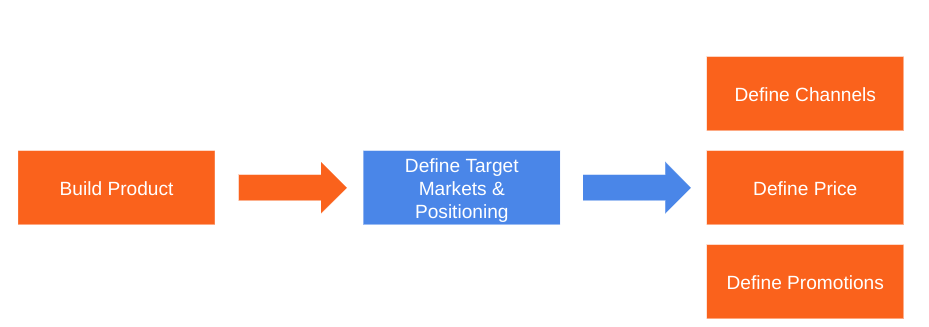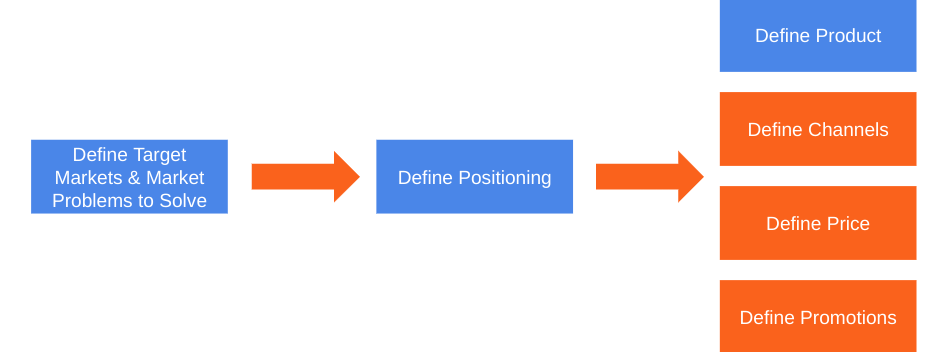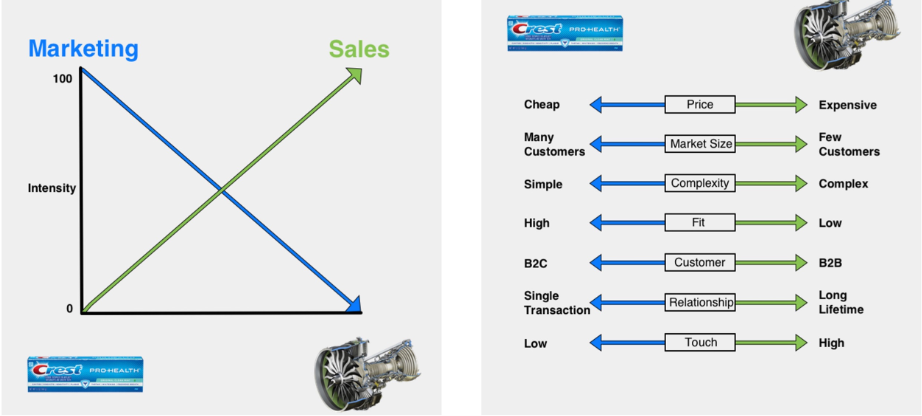Learn Together
Suggested Time: 70 mins
Reading: Marketing & Sales (5 mins)
Marketing and sales are crucial components of a successful business strategy. To do marketing and sales for a business, start by identifying the target market and their needs and preferences. Develop a marketing plan that includes a messaging strategy, advertising channels, and tactics to reach the target audience. Utilize social media, email marketing, content marketing, and search engine optimization to generate leads and build brand awareness.
Consider the 4 P’s of the marketing mix:

Let’s add in the 4 C’s of the marketing mix:

The PMF (Product-Market Fit) is an important sign that the time is right to expand. The demand for your product is greater than the supply available. To capitalize on this opportunity, you should determine the amount of product you can produce and the number of salespeople required to sell that amount.
It’s also important to set the right price for your product. Remember, revenue is calculated by multiplying the price by the volume of sales. Keep in mind that the sales staff is a cost of revenue, affecting the gross margin. Once you have figured out the volume and pricing, you can then work backwards from sales forecasts to determine the number of sales staff needed and their potential earnings (OTE: On-Target Earnings). If you successfully implement all of the above strategies, you can increase sales without needing to allocate extra funds from your operating budget.
For sales, focus on building relationships with potential customers, understanding their needs, and providing solutions. Create a sales process that includes lead generation, qualification, presentation, and closing. Train sales staff to be knowledgeable about the products or services offered and to communicate effectively with potential customers.
Measure the effectiveness of marketing and sales efforts using analytics tools and data analysis. Make adjustments to the strategies and tactics as needed to optimize results. Provide excellent customer service and encourage referrals and positive reviews to build a strong reputation and drive sales.
Next, let’s compare inbound vs. outbound marketing:
Inbound Marketing:
- Pulls in interested prospects
- Addresses the consumer’s needs
- Interactive and fluid
- Draws in customers
- Natural habitat: blogs, social media, opt-in emails, search, influencer marketing
Outbound Marketing:
- Pushes at everybody regardless of interest
- Addresses the product’s needs
- Inert, one-way
- Seeks out customers
- Natural habitat: display ads, billboards, telemarketing, magazines, TV ads
Go To Market Strategies:
The most common way that companies go to market is build something and put it out into the market without knowing the customer. This is always problematic.

An improvement on a ‘Ready-Fire’ strategy is to also ‘Aim,’ which means looking at the target markets and positioning your products accordingly. This is better but still flawed.

The best g2m approach is to aim first by looking at the customer and thus market; then, figure out how to position your product accordingly, and then define what the product is- along with defining the channels, pricing, and promotions. This approach improves your chances of success.

Marketing Intensive vs. Sales Intensive Strategy
Simply put: If your company is marketing intensive, the product is bought. If your company is sales intensive, the product is sold. Let’s compare the sales model for toothpaste and jet engines:

Direct to consumer products (such as toothpaste) tend to be more marketing intensive. Business 2 Business products (such as jet engines) tend to be more sales intensive. Take five minutes to go through the factors listed in the above image and to determine where your company fits.
Articles (5 mins)
Take five minutes to find key points from one (or both) of these articles to share in the upcoming discussion.
Founder Interview (30 mins)
Jordan Wan - Sales for New Founders
Discussion (10 mins)
What ideas from today’s readings and video stood out to you? Was anything confusing or difficult to understand? Answer one another’s questions and commit to finding answers after the session if any questions remain.
Breakout Rooms (15 mins)
Return to your executive summaries and revise them with a focus on the ideas from this session. Give and receive feedback on executive summaries